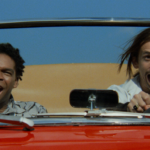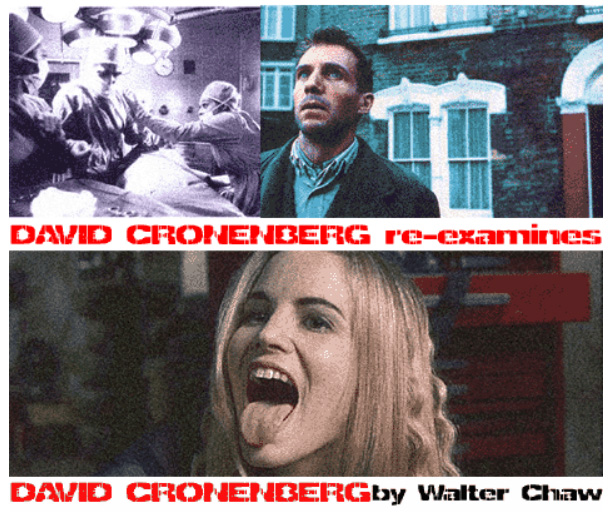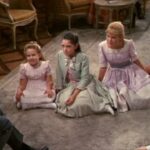***½/**** Image B Sound B+ Extras A-
starring Casey Affleck, Rooney Mara
written and directed by David Lowery
by Alex Jackson All forms of an afterlife are kitsch. You can’t even conceptualize Heaven, Hell, reincarnation, or spiritualism without turning it into a greeting card or a joke. Kitsch is built into the concept. There was a point in my life where I felt that while it was kitsch, kitsch was all we had. The only other option was to confront the vast nothingness and indifference of the universe and acknowledge how little time and space we take up in the grand scheme. Maybe our belief in a life after death is the equivalent of Wile E. Coyote running off a cliff and not falling because he doesn’t look down.
I don’t feel that way anymore. In the last five years or so, I’ve lost my grandfather, my stepfather, my father-in-law, my mother-in-law, and my infant son. My father was diagnosed with head and neck cancer roughly three years ago. On top of all that, I spent a few months volunteering as a visitor for patients in hospice. I’ve rapidly become familiarized with the concept of death and dying, and I’ve discovered that the thought of life after death does not make me feel better about it. To some extent, I find it offensive now, in that it seems to trivialize something that is catastrophic and messy. But mostly, it just does not make me feel better.
I actually prefer to have people fade away and be forgotten. I like the idea of fading away and being forgotten myself. It’s a good thing to move on and continue to grow. The best films about mortality? Ingmar Bergman’s The Virgin Spring, where he vows to build a church at the site of his daughter’s death. Creating meaning from a senseless and meaningless event makes sense to me. It conforms to how I see death. I also like E.T.: The Extra-Terrestrial, particularly the unused ending where Elliot says a prayer for his friend and then the camera slowly cranes up as he rejoins his friends in play. It suggests the importance of letting go and not blocking the pain of loss with ideations of immortality in this world or the next. I like the whole of The Tree of Life, too. Though not about death specifically, it embodies the awe of a temporal existence. If it’s saying nothing more complicated than once there were dinosaurs and now there aren’t, or once we were children and now we are not, or once there was nothing and now there is something, well, that’s enough for me. The Tree of Life doesn’t fixate on constants or insist on their necessity.
I’m trying not to speak definitively here. My preference for a temporal existence over a constant one is born of my own insecurities and doesn’t necessarily reflect any greater wisdom. Obviously, the need that a belief in the supernatural sates is a common one. But it’s not universal. In fact, it appears that artists (in this case, filmmakers like A Ghost Story writer-director David Lowery) may be most prone to it. The centrepiece of A Ghost Story is a monologue by Will Oldham about how art is the only thing that may survive for millennia and, what’s more, how it has to be created not for other people but for God, i.e., a “higher purpose.” That may be true, but this need to have something of yourself survive eternally speaks to an egotism that, while hardly unique to the soul of an artist, is certainly characteristic of it.
As with all concepts of the afterlife, any possible example of art that will “last through the ages” has since devolved into kitsch. With overfamiliarity, these works have lost their original power and can only be understood in a post-modern context. Oldham provides us with two examples: Beethoven’s Ninth Symphony, and the Mona Lisa. Well, it’s impossible to think of “Ode of Joy” without remembering Die Hard or A Clockwork Orange, not to mention countless Looney Toons or Ren and Stimpy shorts that may have employed it to comic effect. And I don’t see how the Mona Lisa could possibly have survived Marcel Duchamp, Dan Brown, or Hudson Hawk. This point is never made directly in the monologue, though Oldham does seem to fantasize about a post-apocalyptic age where mankind becomes less savvy and sophisticated and will regard these works as if experiencing them for the first time.
A Ghost Story works very, very hard to avoid kitsch. I suppose you could say there is something wilfully naive about it. The main gimmick is that the movie’s ghost (Casey Affleck) is depicted as a man in a white sheet with the eyes cut out, much like how you would make a ghost costume in grade school. Not only does it seem this was not meant to be funny, but it appears that we aren’t even meant to carry any pre-existing associations with the image. Early on in the film, we watch in a long static shot as a mourning Rooney Mara eats most of a pie in real-time. I didn’t realize this scene was already infamous, but I was shocked by it and related it to my wife. She told me that it sounded like a mukbang, which is a trend on YouTube where people watch others eat so they don’t feel as lonely. I strongly suspect that whatever was being communicated in this scene was sincere, but the digestive juices of the surrounding culture have quickly transformed it into a joke.
The film’s aesthetic could be described as “minimalist.” The real point of depicting Affleck as a guy-in-a-sheet is to see how much information can be conveyed when you remove dialogue, facial expression, and body language. Lowery provides scant details about who this guy was in life. He is called “C” in the credits and is a musician, and that’s the extent of his character development. His relationship with Mara’s “M” seems pretty frosty. Maybe because they are kinda/sorta arguing over an upcoming move. Pie-eating excluded, there is no real change in her affect after he dies. Or, I don’t know–maybe there is. We do get a scene of them spooning and kissing in bed together, and his beefy arm dominates her Olive Oyl physique in a way that implies he’s taking up the bulk of their relationship and leaving little room for her. I could be reaching there also. We get a scene where she tries to talk to him about moving the piano and he more or less shuts her down because he’s working on a piece. But then there’s a flashback after he is dead and haunting the house where he has her listen to said piece. She complies. Maybe the point is that no relationship can really be distilled in terms of good or bad, though it’s just as likely that Lowery is reticent to compromise his spare aesthetic with characterization.
The important thing I need to get across here is that Lowery conveys few universal truths through this material or through this approach. A Ghost Story is an art film made by, about, and possibly for other artists, and this extends to its philosophy concerning life and death. I don’t know much about C, but I have enough hints to infer that he has probably chosen the afterlife that best fits his personality. Not all of us necessarily have his need to exist outside of time, moving indeterminately through the past, future, and present while holding on to a bit of unfinished business. It was difficult for me to connect with A Ghost Story, and I think that’s because the drama of the film isn’t situational but rather spiritual–a much more complex gulf of empathy to effectively bridge.
With all that said, I like A Ghost Story quite a bit. I found all its arty affectations–its Academy ratio, its autumnal imagery, its unbroken takes, the sheet–pleasurable in and of themselves. One of the issues I’ve been having with minimalist filmmaker Kelly Reichardt is that this approach eschews both the kinetic responsiveness of a more naturalistic, vérité cinema and the pleasure of submitting to a conventional and didactic, God-like filmmaker. I’m not there in the moment and I’m not under anybody’s spell, so I’m without an entry point. The sheer ambition of A Ghost Story, to develop a metaphysical perspective towards our mortality, cuts through a lot of that and settles the film firmly into the camp of an auteur. You’re in somebody’s control when you watch it.
I wouldn’t worry as much that A Ghost Story is “pretentious.” Less ambitious, unconventional films would of course have more plot, more dialogue, more characterization (you almost want to say “more of a screenplay”) and would then devolve into kitsch (i.e., Ghost or Always) much quicker. Sincerity and ambition are of great value to me, even when the film itself may not be very “good” otherwise. Simply losing that protective shell of ironic distance when dealing with material like this is an exciting enough feature for me.
THE BLU-RAY DISC
I’m not entirely sold on the 1.33:1, 1080p transfer of A Ghost Story on Lionsgate/A24’s Blu-ray release. It looks slightly overexposed, causing milky or sooty contrasts and amplifying the digitally-generated grain; the nostalgic effect they might be going for, complete with rounded super8 corners on the frame (which may be lost on televisions with overscan), could probably have been arrived at a tad more subtly. That said, the image is evocative and, at times, dazzling thanks to the almost tactile level of detail, and the white ghost is a miraculously stable highlight of a rather reserved palette. The movie’s soundmix, rendered in 5.1 DTS-HD MA, is surprisingly able to show off a bit in an impressive sequence where M moves back and forth between hearing C’s music for the first time in flashback (vibrant) and listening to a recording in present-day (quite dead). On evidence, the disc’s lossless track reproduces the full vibrancy and sophistication of Daniel Hart’s score, especially during a frightening “poltergeist” scene. You may, however, begin to lose patience with the relative softness of the dialogue and ambient effects.
Extras begin with an audio commentary featuring Lowery, cinematographer Andrew Droz Palermo, production designer Jade Healy, and composer Hart. It’s pretty much the perfect yak-track. This is essential listening if you are wanting to dig into A Ghost Story or are seriously interested in filmmaking. The participants intelligently deconstruct the movie for us, pointing out the rules they followed–we never see C entering or exiting a room, for example, and close-ups are avoided as much as possible–and in the process implicitly prove the need for them. I appreciated a comment made during the song-listening scene where they isolate a rare close-up, in this case of Rooney Mara, and point out how uncomfortable it made her since she had no outward emotion to display and nothing to do. The four strike a good balance of earnestness and self-awareness. Naturally, the pie-eating scene is discussed at length. Everybody loves it and thinks that Mara “nails it” while acknowledging that this is the juncture where people will decide if they hate A Ghost Story or not. Elsewhere, somebody says, with no apparent irony, that they decided the film didn’t need a two-minute shot of a candle.
“A Ghost Story and the Inevitable Passing of Time” (30 mins., HD) is a cast-and-crew roundtable that takes place in a dark haunted house. As is the case with most making-of featurettes, it’s superfluous in light of the commentary track and goes over the same key points, such as how the Will Oldham monologue was included partially to give the audience a “breather” after going so long without any dialogue. I think I caught Casey Affleck nodding off at spots. In “A Composer’s Story” (5 mins., HD), Hart demonstrates how the score’s composition is thematically tied into the film. The advertised six-minute deleted scene consists of Affleck washing the dishes and making coffee on the morning of his death. Once you’ve bought into A Ghost Story, this is a lot more interesting than it sounds, although I think it probably does push things too far given our flimsy investment in the character. During a moment where he stares off into space (à la Nicholson in One Flew Over the Cuckoo’s Nest or Wahlberg in Boogie Nights), you get to thinking his software needs rebooting. Rounding out the platter are forced startup trailers for It Comes at Night, Woodshock, The Lovers, The Big Sick, and The Hero–a fairly appealing-looking roster, truth be told. Good job, Lionsgate/A24.
92 minutes; R; 1.33:1 (1080p/MPEG-4); English 5.1 DTS-HD MA; English SDH, Spanish subtitles; BD-25; Region A; Lionsgate

![A Ghost Story [Blu-ray]](https://m.media-amazon.com/images/I/51fXLcQHzSL._SL500_.jpg)




